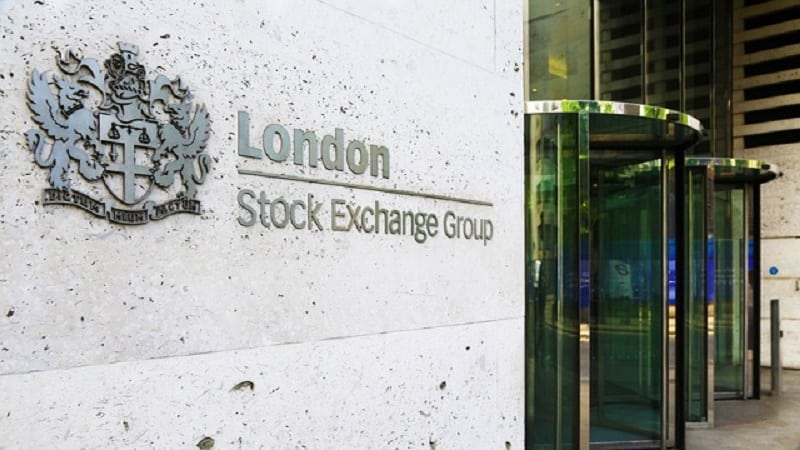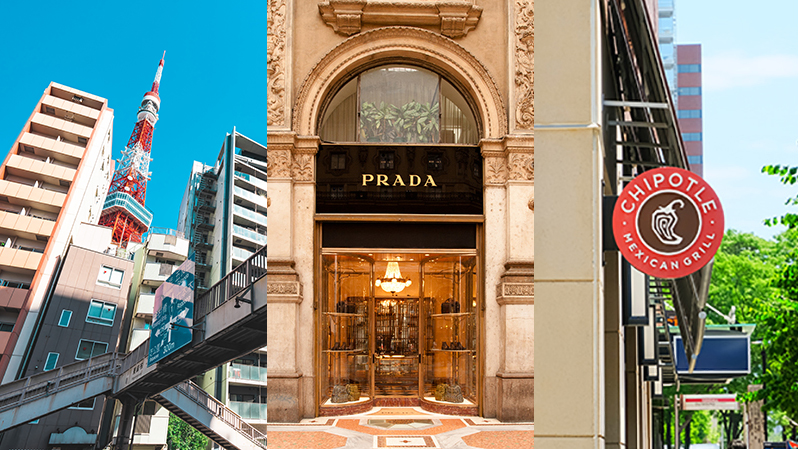Home goals for impact and sustainability in Japan
For Cadira Capital Management CIO Yu Shimizu, running a sustainable impact strategy is personal.
“My journey into sustainable investing began in 2012, following the Great East Japan Earthquake and subsequent nuclear power plant accident. My hometown is in Fukushima, around 50km from the power plant, and I helped my parents evacuate.
“This made me think deeply about sustainability, as the accident demonstrated the environmental and social impact stemming from weak corporate governance at Tokyo Electric Power Company.”
Cadira, the Tokyo-based boutique, was incorporated in 2022. Shimizu runs the Cadira Capital Management Sustainable Japan Equity fund, which he brought with him from Sparx Asset Management. The fund aims to contribute to solving environmental and social challenges while delivering returns.
“Japanese companies often want change but need external support due to their consensus-based decision-making culture,” Cadira director and global head of operations Noah Bonomi Antunes said.
“Our engagement focuses on understanding companies’ needs rather than pushing an agenda, which has allowed us to engage with even Japan’s largest companies despite our relatively small AUM.”
As an example of the fund’s engagement with its holdings, Shimizu highlighted Katitas, a Japanese real estate company.
Japan currently faces an issue with abandoned housing, with millions of homes left empty due to low birth rates and an ageing population.
“Katitas provides second-hand houses, addressing Japan’s vacant housing problem – nine million currently stand empty. This helps both social cohesion and affordable housing needs, offering homes at roughly half the price of new builds.
“The problem the company had is in communication with the investors, because most investors were only interested in the numbers. We had a very deep discussion with them and they created a logic model, which helps to show how their activities result in a social and financial outcome. The stock price has risen steadily over the past nine months.”
As of 24 January, Katitas’s shares were up 12.6% over the previous 12 months.
Reforms to Japan’s corporate governance regime have been well received by investors in recent years. Due to the changes, Shimizu said engagement with Japanese companies has become easier, with more active investor relations departments versus a decade ago.
“Our approach is to sit down with these companies, understand their issues and develop an engagement strategy that fits their needs. We’re not trying to force an agenda, but to provide solutions,” Bonomi Antunes added. “That’s why, despite managing only $50-60m [£40-50m], we’re able to engage with top Japanese companies who want to hear our perspective.
“One of our most innovative approaches is a proprietary model developed since 2012, which has evolved to incorporate impact investing. While impact investing is typically associated with private equity, where results are easily measurable, we believe it needs to be considered at a larger, systemic scale.
“Our model incorporates impact by translating qualitative factors into numbers. When we present to companies, we don’t just discuss soft factors. We show how these factors directly impact corporate value and share price. This provides tangible, actionable advice that management teams find compelling, whether it’s about supply chain value or corporate governance.
“We’re not claiming the model is perfect, but it offers a unique way of understanding a company’s potential beyond traditional financial metrics.”
Why JO Hambro’s Mehta loves Prada
Luxury brand Prada offers a compelling investment opportunity despite turmoil within the high-end fashion sector, according to JO Hambro’s Samir Mehta, following its successful turnaround story.
Mehta, who is senior fund manager of the JOHCM Asia Ex Japan fund, described Prada’s performance between 2016 and 2019 as “anaemic”.
“A greater reliance on wholesale distribution (as opposed to direct-to-consumer retail), stores at some undesirable locations and rudimentary online marketing efforts didn’t help. Yet all was not lost,” he explained.
“[With] an established brand, a founder team (who own 80% of the business), a long-term commitment to fashion and legacy and importantly, a willingness to hire professionals, Prada generated minimal operating cashflows but had low debt – other than committed leases.
“Stagnant sales and low profit margins stood starkly against the might of LVMH, the clear and distinct leader in luxury.”
The manager pointed out that, in the past five years, the luxury industry has been reshaped due to the pandemic, rising inflation and government stimulus across both developed and developing nations.
“Pre-pandemic, Chinese consumers were the driving force for luxury goods. During and post-pandemic, demand was fuelled by western consumers assisted by government stimulus and a shift in spends from services to goods. In 2023/4, inflation and rising interest rates dented disposable incomes.
“Perhaps most underestimated was the moderation of demand in China. A slower economy, poor job market, falling property values and a clampdown by the Chinese Communist Party on conspicuous consumption became strong headwinds,” said Mehta.
Despite the challenging backdrop, the fund manager believes there are stock-specific drivers that have actually made Prada more, rather than less, attractive over the last half a decade. For instance, the firm’s decision to shift away from wholesale distribution, which, while it initially disrupted sales, “brought back complete control of inventory and pricing”.
“[It] revamped online marketing and influencer engagement. Millennials and Gen-Z, once dismissed as fickle, became the new darlings of luxury retail. Prada courted them not with florals for spring, but with sustainability initiatives and inclusive marketing. [It] spoke the language of the young, not in patronising tones, but with the authenticity of a brand reinventing itself.”
Mehta added that product mix was “another key factor” in driving the company’s success. Prada and Miu Miu – an Italian high-fashion brand fully owned by Prada – “diversified their offerings, creating a balanced portfolio”.
“They refocused on craftsmanship and heritage. In a world of fast fashion and disposable trends, Prada doubled down on quality. [It] embraced [its] history not as a burden, but as a differentiator.”
In fact, Mehta said Miu Miu in particular has resonated with younger shoppers, having organically grown its retail sales by 105.4% in Q3 2024 alone. Estimated earnings growth for Q1 2025 stands at 68%, according to company data and Morgan Stanley estimates.
“In a way, you do expect brands out of nowhere gaining traction in a social media influencer-dominated world, but for a long existing brand to achieve this sort of growth is staggering,” Mehta said.
Last year, Prada achieved double-digit growth across all regions it operates in, apart from the US which grew 9%. The fastest growth was seen in Japan at 46%, which the fund manager attributes largely to the country’s increase in Chinese tourists.
Hot on Chipotle
A stop at Chipotle Mexican Grill is guaranteed to bring a few things to the table: rice that makes the mouth water, a team expertly swaddling burrito contents in a tortilla and a dollop of guacamole (yes, I know it’s extra, and no, I’ve never opted out). It’s been almost the same recipe for success since the business began in 1993. And for Tom Wildgoose, senior portfolio manager of global equities at Sarasin & Partners, this is why the brand thrives.
While many fast food chains have scrambled in the past few years to cling to customer appeal while prices rose, Chipotle had already hit on a market that worked: value. “At this present moment, there’s a real demand for value for money, not just cheap, but a high value offering. In this case, food at a decent price,” Wildgoose said.
Inflation across US and UK markets has meant that many businesses, such as McDonald’s, have racked up prices to keep pace. In 2022, McDonald’s increased the price of its cheeseburgers from 99p to £1.19. Last summer, the golden arches released its first meal deal in the UK priced at £5 to bring more appeal for customers.
Chipotle has also faced a need to raise prices, but increases have been relatively limited. In December, it notched prices up by around 2%, marking the first increase in over a year.
“It’s raised prices less than others. We’ve been in an inflationary environment and Chipotle has been able to generate sales growth without squeezing the customer, which is positive,” Wildgoose said. “I think that demonstrates the quality of the brand and the product – and the demand for it among consumers.”
The food industry has also faced a new hurdle in recent years through the popularity of GLP-1 medication.
“GLP-1 is obviously a concern for anything food related, but it’s snacking which really is under pressure, chocolate bars and the like,” Wildgoose said. “We’ll have to wait and see but, ultimately, people still need to eat and Chipotle is a reasonably healthy option versus burgers and chips, meaning it should be relatively protected.”
The environment has proved prosperous for the company, which has raised its share price 20.4% in the 12 months to 29 January. And as an investor, Wildgoose believes success comes with carrying on.
“I hope they just keep doing what they’ve been doing successfully for the past few years,” he said.
“They can roll out stores in new locations and hopefully drive traffic through. There is a bit of an angle in adding automation, improving the throughput in individual stores. If you can get 10% more people through, then the profitability per store goes up, which is really nice.
“But the real long-term driver is going to be growth. Pushing out and increasing the number of stores.”
This article first appeared in the February issue of Portfolio Adviser magazine









